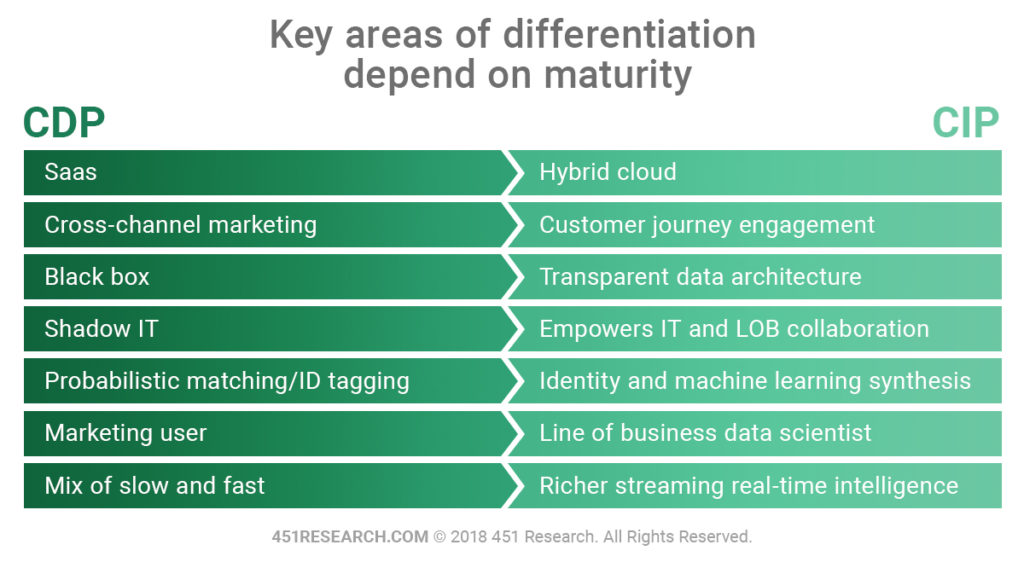Customer data platforms (CDPs) are white-hot right now. According to Forbes, 78% of organizations either have, or plan to implement, a CDP in the future.
The main goal of CDPs is to unify customer data across their silos, providing a clear view of the customer. These products aim to address some of marketers’ most common pain points — 46% of marketers today say they only have data from a few channels connected, while 27% do not have any data channels connected, according to Researchscape. Forrester reports that nearly 40% of marketers have difficulty integrating offline and online data, while Forbes notes that a whopping 93% of executives believe that leveraging customer data in marketing campaigns will “create a noticeable shift in their ability to meet disruptive and competitive challenges.”
Fragmented data poses big problems — for example, it’s difficult to deliver effective personalized recommendations to a customer if you can only track interactions on one channel. Brands might continue to display ads for a given product to a user, even if he’s purchased the product already, because his purchase data is siloed on a different platform. Multi-channel attribution is also tricky if not impossible if you can’t connect all your channels.
While a CDP may seem to address these concerns on the surface, a deeper look reveals a more complicated and confusing story.
- There is very little agreement on the specific capabilities of the CDP category; making it difficult to compare different CDP vendors, and important to verify that any given CDP vendor is able to support the uses cases you need.
- CDPs require you to install yet another tag on your website and create yet another data silo; brands are trying to bring their data silos together, so this is a step in the wrong direction.
- Because CDPs are SaaS products, the data resides outside your corporate infrastructure, introducing privacy and security concerns for sensitive customer data. And CDPs only solve your data problem while you maintain your subscription to the product; what happens to your data if your vendor goes out of business or is acquired or you decide to discontinue your subscription?
- Most CDPs rely on their users to build rules-based audiences for segmentation and targeting; why create rules manually when you can use AI/ML and get superior results?
- While some CDPs have AI/ML capabilities, they are essentially black boxes —it’s not always clear which data they’re leveraging or how, and the algorithms are not customized to meet the specific needs of your business.
For businesses eager to unify their customer data while avoiding these issues, implementing a Customer Intelligence Platform (CIP) instead of a CDP may be the answer. CIPs, an emerging category, unify your customer data (including both enterprise and behavioral data) within your company’s virtual private cloud (VPC), e.g., Amazon Web Services, Google Cloud Platform, or Azure. This means your data is secure, remains in one place, and can be accessed by your team without any threat of interruption or need to replace any of your existing platforms.
According to 451 Research, some of the other key areas of differentiation between a CDP and CIP include:

Syntasa’s CIP provides three main benefits when compared to the typical CDP:
- Keep data within your VPC.
- Stop creating business rules manually; use machine learning and AI to build custom models that transform your brands’ data into business use cases.
- Activate across all your channels.
Ready to try out a CIP today? Start a free trial of Syntasa.

